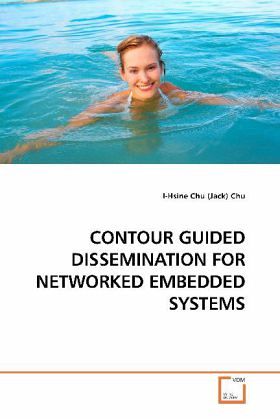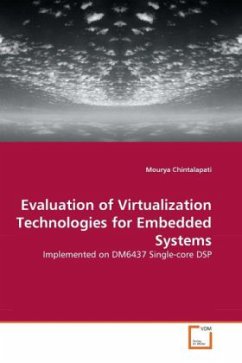
CONTOUR GUIDED DISSEMINATION FOR NETWORKED EMBEDDED SYSTEMS
Versandkostenfrei!
Versandfertig in 6-10 Tagen
32,99 €
inkl. MwSt.

PAYBACK Punkte
16 °P sammeln!
The emergence of new devices and technologies for networked embedded computing motivates new platforms for integrated computation, control, communication and coordination. These platforms are based on a large collection of loosely-coupled microcontrollers that communicate over low-power wireless links to achieve systemlevel objectives. The low-power transceiver in each node makes it necessary to propagate messages between non-neighboring nodes over multi-hop routes. Traditional methods for multi-hop communication, on wired networks, rely on unique network identifiers for each node and do not s...
The emergence of new devices and technologies for networked embedded computing motivates new platforms for integrated computation, control, communication and coordination. These platforms are based on a large collection of loosely-coupled microcontrollers that communicate over low-power wireless links to achieve systemlevel objectives. The low-power transceiver in each node makes it necessary to propagate messages between non-neighboring nodes over multi-hop routes. Traditional methods for multi-hop communication, on wired networks, rely on unique network identifiers for each node and do not scale well as the number of nodes increases. These methods select one of the available paths between a source and a sink. Extensions to these methods, which are referred to as dissemination methods, have been reported in the sensor networks literature. These extensions are energy efficient and do not rely on network identifiers; however, not all of the available paths between a pair of nodes are fully utilized.












